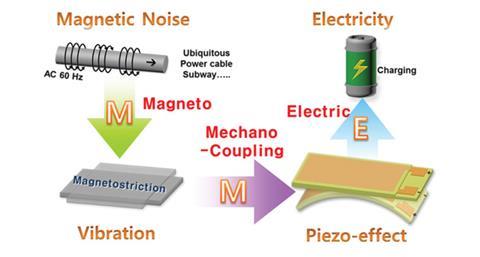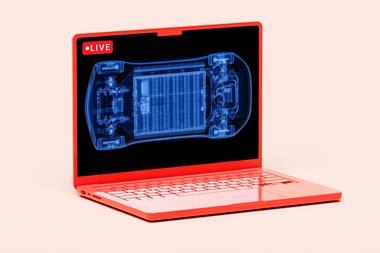Magneto–mechano–electric generator could be effective power source for wireless charging
Wireless battery charging may benefit from a new generator that harnesses magnetic energy from our environment.
We are surrounded by magnetic fields, including those created by electric power transmission lines, which are essentially wasted energy. But how can we channel and convert magnetic fields into useful electrical energy? For this, an electromagnetic generator is needed. Unfortunately, current generators are too heavy, too large, and their efficiency too low for practical applications.

Now, Jungho Ryu, from the Korea Institute of Materials Science, and colleagues have designed a magneto–mechano–electric generator that overcomes these limitations, and successfully harvests this otherwise squandered magnetic energy.
Ryu explains that the device achieves a much higher power density than conventional electromagnetic generators: ‘We applied solid smart materials to generate electric power under a tiny magnetic field in a small device volume.’
The smart material in the device is a single crystal composite that responds to a low frequency magnetic field by elongating or contracting. This composite is flexible and can resonate at the frequency of the electric field. Strain induced within the composite outputs a voltage.
Materials scientists are excited by what could be done with the work. Steve Dunn, of the Queen Mary University of London, UK, explains that the researchers have taken low-grade, low-quality and freely available energy, and added value to it. ‘It would be great to see this in the real world’, he says and envisages applications in wireless mobile phone charging, and in keeping sensors on power lines working. This could give greater flexibility to where electric devices can be used, since the need to access the battery is eliminated. And Yasuhiro Matsuda, from the University of Tokyo, Japan, says this combination of the magnetostrictive material and piezoelectric cantilever device is ‘fantastic’ and ‘may be applied to commercial devices before too long.’
Ryu’s team intend to optimise the device to improve its power density. So far they have demonstrated its ability to harvest energy from a vacuum pump cable to power 35 light emitting diodes, but suggest a range of potential applications, which ‘may provide a safer living and working environment’.
References
This article is free to access until 24 June 2015. Download it here:
J Ryu et al, Energy Environ. Sci., 2015, DOI: 10.1039/c5ee00414d












No comments yet